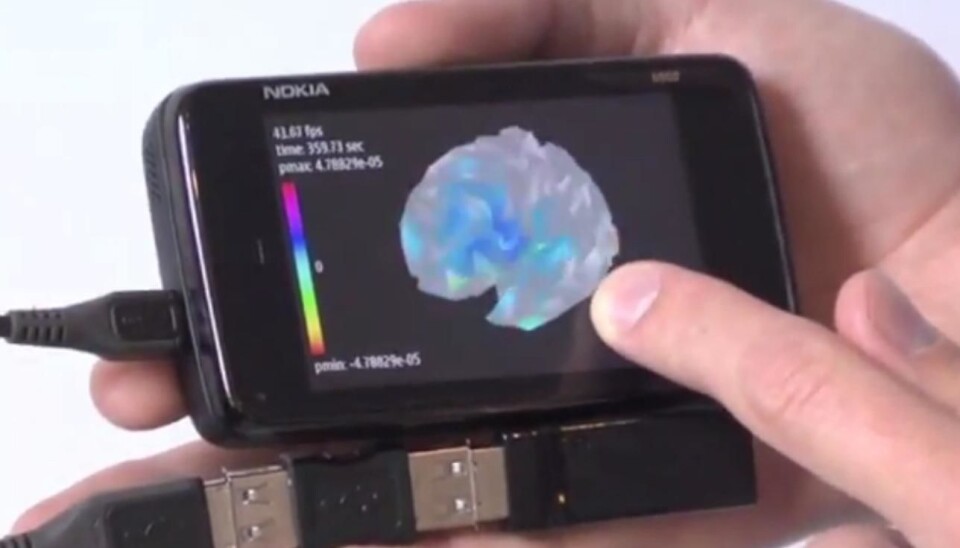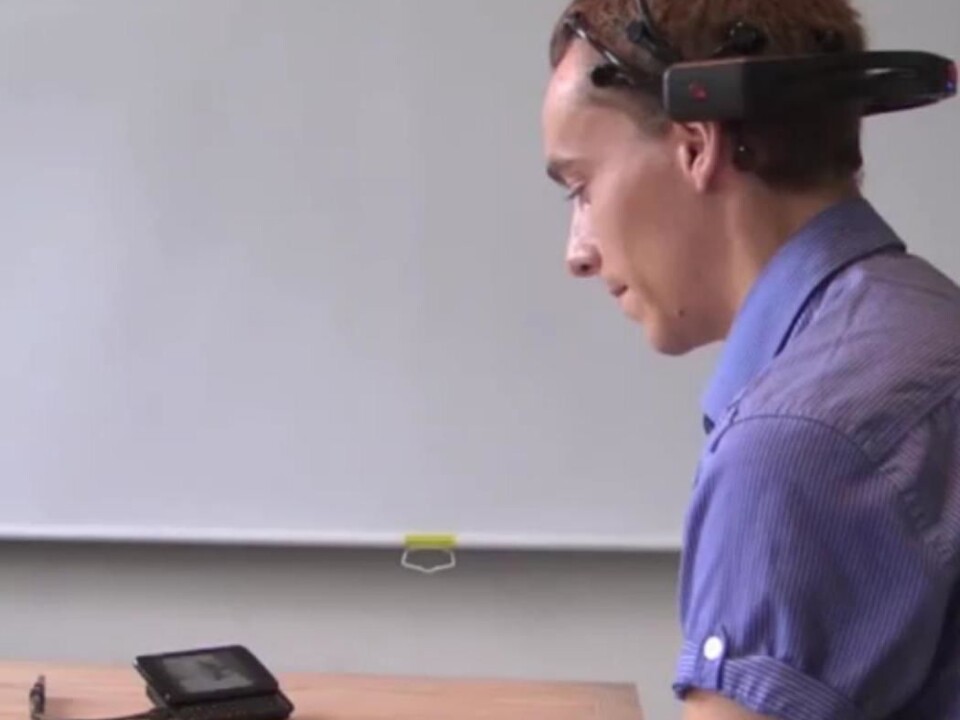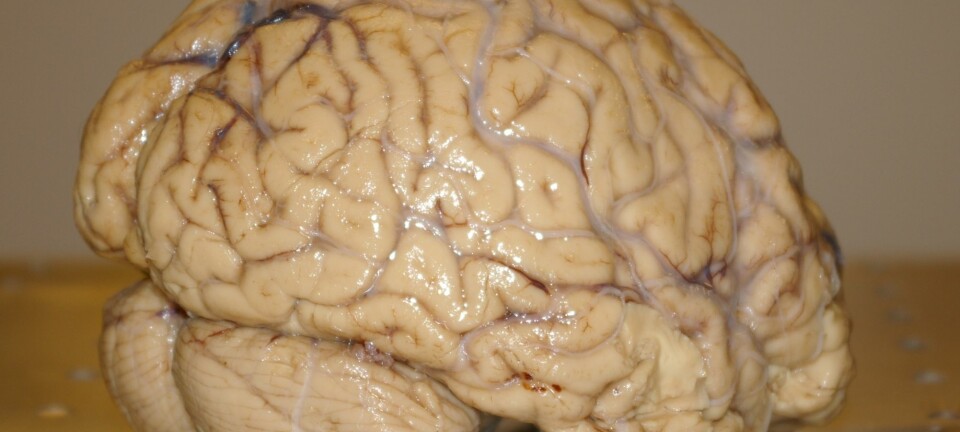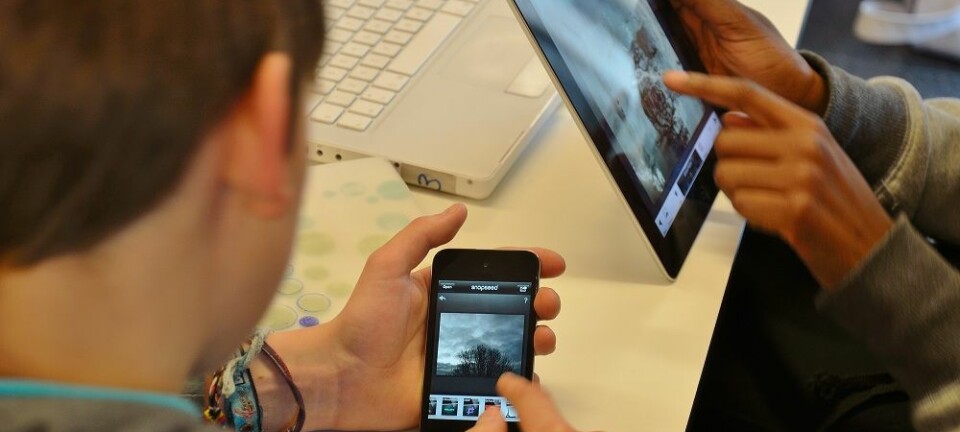
Your smartphone can scan your brain
Now you can connect a headset with electrodes to your smartphone, so you can read your brain’s signals while on the move.
By connecting a handy brain scanner to a smartphone, researchers at the Technical University of Denmark (DTU) have made monitoring the brain directly on the screen of the mobile phone possible for the first time – regardless of where you are or what you’re doing.
“When studying the brain in a traditional way you take people into the laboratory, where there is some quite expensive computer equipment,” says Jakob Eg Larsen, an associate professor at DTU Informatics. “It’s necessary to isolate people from their usual surroundings and give them some very specific tasks, and that limits what you can get out of the studies.
“Therefore we have tried to make some equipment that can be used in the field, so you can study the brain where people are in their natural surroundings,” says Larsen, who created the mobile scanner together with colleagues at DTU Informatics.
App constructs 3D image of the brain
To capture the brain’s electrical activity, the researchers used a relatively cheap EEG headset made by Emotiv. The headset, which has 14 electrodes, is placed on the head and normally communicates with a computer using a USB receiver, so it is possible to play a computer game, for instance, using ‘the power of thought’.

Instead of using a computer, the researchers designed an app for a Nokia N900 smartphone, which enables the phone to gather and analyse the data from the EEG headset.
When the headset is being worn, the app shows a 3D model of the brain in which areas light up when electrical brain waves are detected. This makes it possible to study for example the networks in the brain that reflect how it reacts emotionally to pictures or text.
Reading brain waves by mobile phone
In the longer term, a smartphone brain scanner will make it possible to carry out neuro-feedback trials using the mobile phone. Earlier studies have shown that learning to control different types of brain waves can have a positive effect that reduces the concentration difficulties of e.g. children suffering from ADHD, the researchers say.
They conducted a series of classic tests and these showed that the mobile system makes it possible to detect the same brain waves that more sophisticated brain scanners can. But traditional, large brain scanning machines will still be preferable for the most advanced studies.
We have tried to make some equipment that can be used in the field, so you can study the brain where people are in their natural surroundings
“It’s obvious that you can get a higher resolution and greater precision by taking people into the laboratory and giving them a bathing cap with 64 electrodes,” says Larsen. “But there we have the disadvantage that they must sit in the lab with all those cables. Which system should be used depends on whether there’s a need for great precision or for mobility.”
Will we all soon wear brain scanners?
Initially, the researchers will use the mobile system for research purposes, but one day this type of small brain scanner will perhaps be something that everyone has.
“There’s a trend at the moment to measure oneself more and more,” says Larsen. “An everyday example is the Runkeeper app for the iPhone, which measures the user’s running and walking trips. There will be more and more of this type of sensor, which you can wear on your body and connect to your mobile phone, so you can see the data that’s collected.”
Jakob Eg Larsen suggests where a mobile brain scanner can be useful: “If you’re about to doze off, you can actually see this from an EEG signal. If you’re driving a car or if you’re a long-distance lorry driver, then you could have this mobile equipment with you and you could have a system that warns you if you’re about to fall sleep.
If you’re driving a car or if you’re a long-distance lorry driver, then you could have this mobile equipment with you and you could have a system that warns you if you’re about to fall sleep.
“Not everyone will run around wearing an EEG headset the way it looks now, but who knows how the world will look in a few years time, when a mobile brain scanner can be made simpler?”
Read the article in Danish at videnskab.dk
Translated by: Michael de Laine









